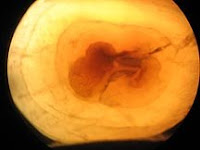
A fresh cool look for Summer - Green !
.
.
This color of Summer stands out with a Wire Wrapped Green Onyx pendant surrounded with a cluster of Aventurine and Rose Quartz beads with White Carved Coral beads. Crystals, Aventurine and Rose Quartz beads add style and complete this 18 inch long necklace with a Toggle Clasp. Two pair of French Hook Earrings give differfent looks, one of two sizes of a simple White Coral, with a second set of dangle style of White Coral and crystals.
.
Aventurine is a form of quartz (chalcedony to be more specific), characterised by its translucency and the presence of platy mineral inclusions that give a shimmering or glistening effect termed aventurescence. The most common colour of Aventurine is green, but it may also be orange, brown, yellow, blue, or gray. Chrome-bearing fuchsitte is the classic inclusion, and gives a silvery green or blue sheen. Oranges and browns are attributed to hematite or goethite. The majority of green and blue-green Aventurine originates in India. Creamy white, gray and orange material is found in Chile, Spain and Russia.
Corals are marine organisms typically living in compact colonies of many identical individual "polyps. The group includes the important reef builders that inhabit tropical oceans, which secret calcium carbonate to form a hard skeleton. Coral tissues become colorless as they reveal the white of their calcium carbonate skeletons, an event known as coral bleaching and most corals are found in the white form. Other colorations also exist depending on chemicals and algie in the water in which they grew. Corals are highly sensitive to environmental changes. Scientists have predicted that over 50% of the world's coral reefsmay be destroyed by 2030; and as a result most nations protect them through environmental laws, especially the black corals. To overcome the shortages for jewelry and other ornamental uses, coral farms are now being developed and used for non-ocenaic purposes.
.
Rose Quartz is a type of quartz which exhibits a pale pink to rose red hue. The color is usually considered as due to trace amounts of titanium, iron or manganese in the massive material found world wide. Some Rose Quartz contains microscopic rutile needles which produces an asterism in transmitted light. Recent X-ray diffraction studies suggest that the color is due to thin microscopic fibers of possibly dumrtierite within the quartz crystal.
.



 Above is seen a 5mm pearl purchased as an Akoya cultured pearl. Notice that it is uniformly round from the seed all the way out to the outer nacre layer, which is the thin line you see at the very edge of the pearl. What was quite remarkable about this pearl is that the center of the pearl is a hollow plastic looking bead, not the Mississippi mussel shell bead that was expected. You can see the circular structure of the Akoya cultured pearl with the bead and resulting layers being rather uniform from center to outer nacre layer.
Above is seen a 5mm pearl purchased as an Akoya cultured pearl. Notice that it is uniformly round from the seed all the way out to the outer nacre layer, which is the thin line you see at the very edge of the pearl. What was quite remarkable about this pearl is that the center of the pearl is a hollow plastic looking bead, not the Mississippi mussel shell bead that was expected. You can see the circular structure of the Akoya cultured pearl with the bead and resulting layers being rather uniform from center to outer nacre layer.
 Thus these pictures show what would be seen if you dissect one of those expensive little jewels you have on that string of pearls you got as a gift.
Thus these pictures show what would be seen if you dissect one of those expensive little jewels you have on that string of pearls you got as a gift.
 And taking it one step further, perhaps a reused piece of plastic for the starter bead. Why the multiple holes in the starter bead? Was the pearl farmer recycling plastic? Why place a used, multi-drilled plastic starter bead inside an oyster to make what could turn out to be a very expensive South Sea Tahitian Pearl in the first place?
And taking it one step further, perhaps a reused piece of plastic for the starter bead. Why the multiple holes in the starter bead? Was the pearl farmer recycling plastic? Why place a used, multi-drilled plastic starter bead inside an oyster to make what could turn out to be a very expensive South Sea Tahitian Pearl in the first place?